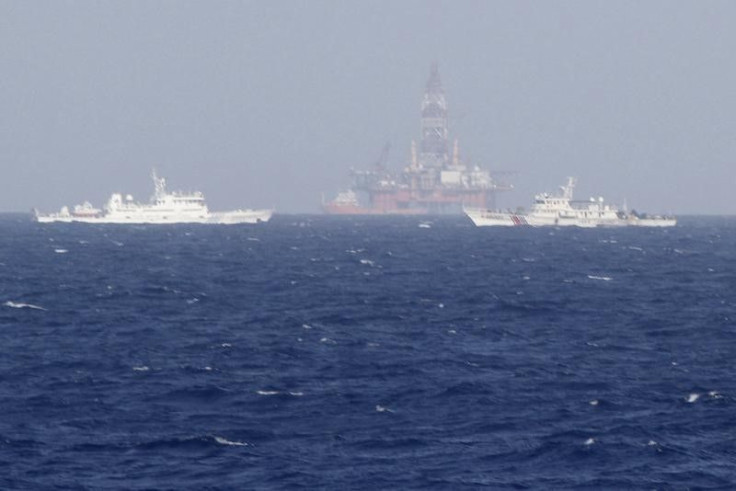South China Sea Maritime Dispute: Beijing Pushes Back On US-India Criticism

The U.S. and India have recently expressed concern over rising tensions between China and its Southeast Asian neighbors over the South China Sea territory. To which China now says, basically: Butt out.
Indian Prime Minister Narendra Modi and U.S. President Barack Obama issued a joint statement following their meeting at the White House Sept. 30, stressing the importance of “preserving regional peace and stability” as the maritime territorial dispute has heated up.
In the statement, both leaders called for “all parties to avoid the use, or threat of use, of force in advancing their claims” and help find a peaceful resolution in the area, specifically pointing to international laws like the United Nations Convention on the Law of the Sea.
China’s claims to some territories in the South China Sea are based on historic evidence, such as that derived from some ancient maps, and are not shared by neighboring nations such as the Philippines and Vietnam.
“Our position is that the dispute in the South China Sea should be resolved by countries directly concerned through negotiation and consultation, and any third party should not be involved in the dispute,” Hong Lei, the Foreign Ministry spokesperson, said during a press briefing.
Beijing’s claims in the South China Sea could potentially affect India, even though the country does not lay claim to the area. As pointed out in local newspaper India Today, the freedom to navigate the waters of the South China Sea includes vital sea passages that are an important conduit for Indian trade with parts of East Asia.
Most recently, Vietnam and the Philippines have been the most vocal about pushing back on China’s claims, through verbal and naval confrontations.
© Copyright IBTimes 2024. All rights reserved.





















